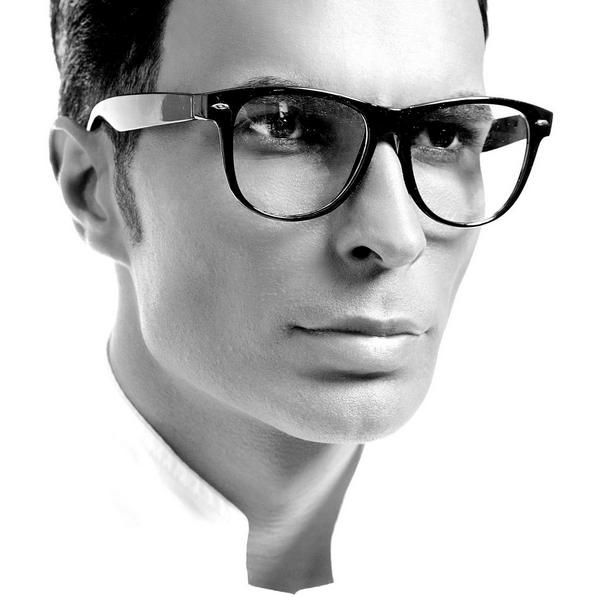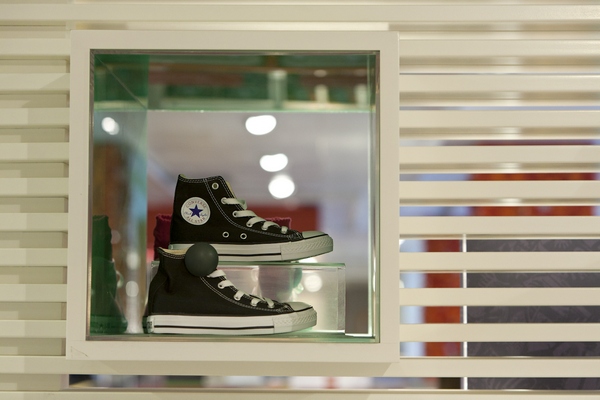Milovan Micevic, Visual Merchandiser for H&M in Belgrade, talks to GE Lighting's Illuminated Minds about the creative process of lighting in fashion retail.
What role does lighting play when merchandising a retail store?
I will start my answer with a question: what is the world without light? It’s a dark place with no joy. Can you imagine life with no colours? I certainly can’t, light brings to life everything I do in my job. With perfect lighting, my mannequins transform into live models.
What are the main things to think about when it comes to the lighting?
There are so many things. Visual merchandisers need to deal with a lot of challenges during the day. One of them is the high ceiling in the store or shop windows. It’s very important that we can easily change the direction of light, whether from the ground or by moving it using ladders. It all depends on what I want to do with it, so I need more then just one type of light. Creating a different mood in the store, highlighting important products, shining light on mannequins, walls or tables – all of these requirements need a different approach.
 |
|
Milovan Micevic, Visual Merchandiser for H&M in Belgrade. (All photos courtesy of GE Lighting) |
How important is lighting in setting the mood in the store?
We set the mood in shops with light in exactly the same way we do in our homes. Every store has its own concept, which depends on the target customer group, type of products and architectural and interior design. Big retail companies tend to stick with clear, impactful lighting, because most are selling products to more then one type of customer. So that kind of light is pleasant for every customer profile.
In big stores, where there is a large volume of costumers at any one time, there are a even more considerations, such as making the products easy to find, presenting them well and improving visibility within the store for better safety and security etc. Smaller stores or shops can play with the dynamics of the lighting more. I think this is a very important thought for the future: to try to and improve the communication between the architect, interior designer, engineer and visual merchandiser, when we are talking about light solutions in store.
How does lighting affect the customer experience in the store?
Again, it depends of the type of the store but overall, that experience is changing. Every shop has a story it wants to tell with the garments, set-up, indoor furniture and lights etc. In big retail companies, we take care to ensure that everything stays visible and clear for our customers. The whole store needs to have a good level of lighting because we have more products to display then smaller stores. We can create ‘magic’ using lighting to make the customer’s shopping experience easy, exciting and fun every time. That is the most important thing to me because if the customer leaves the store satisfied, they will come back again.
 |
|
John Lewis London retail store lighting. |
How does lighting help to increase sales?
Good lighting on special products can increase sales by more than 30 per cent, by my calculations. And you can play with the lighting: for example, maybe you want to sell more of the best selling products by making sure that costumers can easily find them. Or if you want to sell a more expensive garment, you can use lights to make it more desirable to customers, almost as if it has descended from heaven just for them. Especially when we’re talking about jewellery – glittering light is the perfect partner for presenting jewellery.
How important is accurate colour rendering for selling fashion?
In today’s fashion industry we have so many different designs, fabrics, prints and variations of colour, as well as different kinds of sewing technique and hand-made pieces. If we want to present them in the best way we need good lighting with accurate colour rendering. Sometimes we can see strong and intense colours become dead in stores or shop windows. Which, if you ask me, is disrespectful to all the people that have participated in the creative process of developing that garment.
We can showcase designs, details, cool or warm colours and their intensity just with good lights. So for me, lighting is not the area where retailers should try to save money, because in the end good lighting means increased sales – and that is the payoff for sure!
Milovan is a Visual Merchandiser for H&M. His role consists of presenting collections of clothing and the store itself in the best possible way, ensuring the store appears fashionable and attractive to its customers.





 CN
TW
EN
CN
TW
EN







